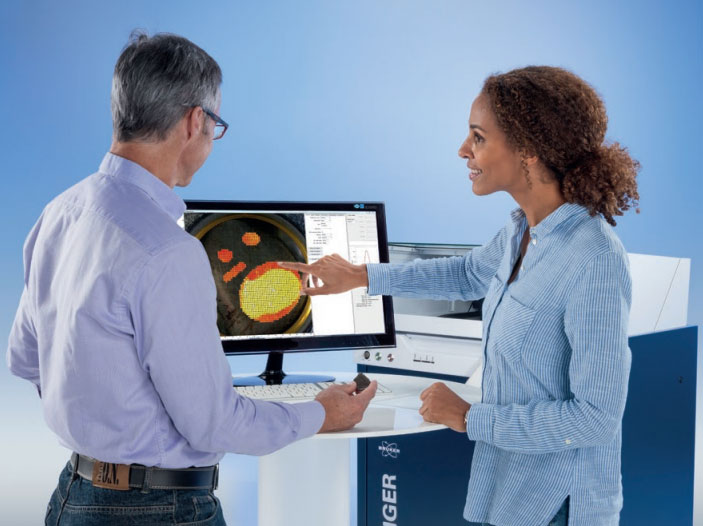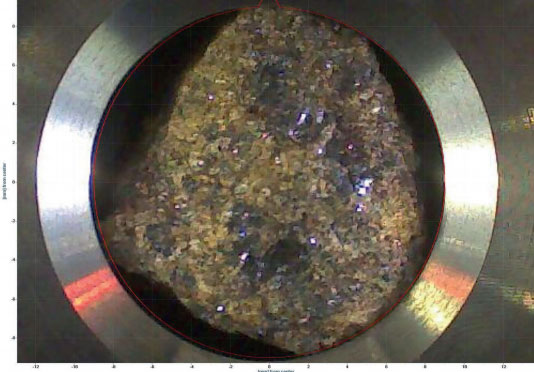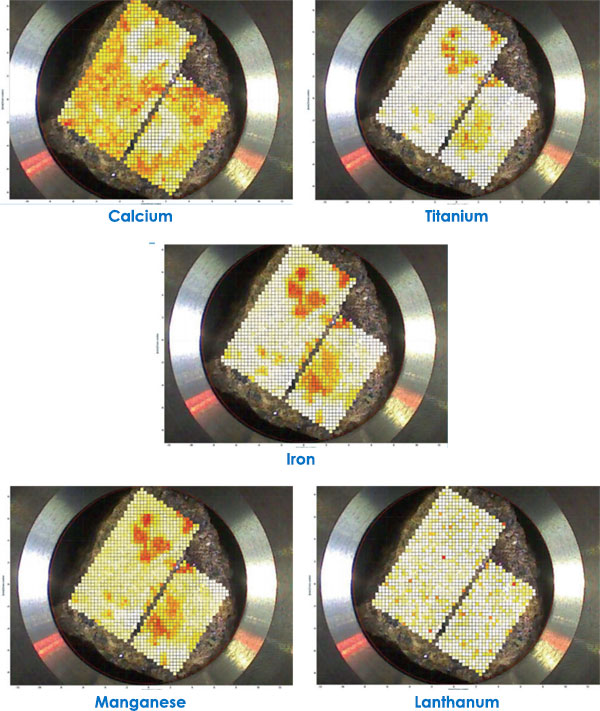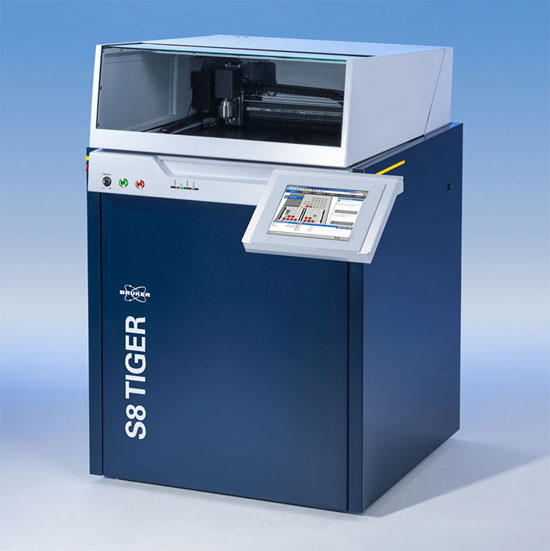Analysing Elemental Distribution in Rocks with XRF (Coltan)
How to analyse elemental distribution in rocks with XRF. In this case study we look at columbite-tantalite (coltan) in rocks from Canada, with the Bruker S8 TIGER Series 2 WDXRF spectrometer.
Blue Scientific is the official distributor for Bruker XRF in the Nordic region (Norway, Sweden, Denmark, Finland, Iceland). For more information or quotes, please get in touch.
Bruker XRF
Instruments for Geology
Contact us on +44 (0)1223 422 269 or info@blue-scientific.com
Columbite-Tantalite (Coltan)
Columbite-tantalite, also known as Coltan, is a key material in the semiconductor industry. Tantalum capacitators are used in virtually all electronic products. However, coltan mining is a volatile and turbulent market, so there’s a constant search for new sources. These need to be evaluated for quality, and XRF is an ideal technique for characterising the element distribution in geological samples for refining and mineral beneficiation.
Bruker S8 TIGER
The S8 TIGER Series 2 is a high power wavelength dispersive X-ray fluorescence spectrometer (WD-XRF). It detects all elements from Be to Am, with up to 100% coverage of the trace region.
- Excitation of elements with a voltage from 20 kV (light elements) to 60 kV (heavier elements).
- Adjust the current instantly from 5 – 170 mA:
- Detect trace elements
- Maintain a count rate in the linear range of the detector, for major elements.
- Up to 4 collimators and up to 8 analyser crystals – optimise for resolution and/or intensity for analysing fluorescence lines.
- Detect the intensity of element lines with Bruker’s new HighSense detector technology:
- Flow counter for light elements
- Scintillation counter for heavy elements

Bruker S8 TIGER WDXRF spectrometer
XRF2 Small Spot Mapping
With XRF2 small spot mapping you can analyse element distribution and very small sample amounts, even down to a single particle. This provides detailed maps of elemental distribution in materials, with the highest resolution available in WDXRF (300µm spot size).
Major, minor and trace elements can be mapped with extremely high sensitivity. The surface is scanned with a step size of 100 µm. WDXRF delivers a much better intensity than EDXRF for light and heavy elements, with high spectral resolution. This is key when detecting rare elements (which can be measured even in the trace region), and to avoid line overlays from major elements.
Setting Scanning Parameters
The S8 TIGER automatically takes a picture of the sample when it’s loaded, like the example below. Using this image you can visually select spots, lines, areas or the entire sample surface. Next, set the spot size, step size and measurement parameters, and the sample is scanned for you.

Element Maps
These examples, from a Bruker application note, are scans of Coltan, taken to examine the elemental distribution of valuable elements, which are of interest to geologists and metallurgists. This demonstrates the sensitivity of the S8 TIGER, which is significantly higher than other WDXRF instruments, while still providing high resolution.
Two boxes were selected on the surface for element mapping. Clear, brownish and purple grains are visible on the rock. The brown areas have a high concentration of calcium, from the host rock carbonatite.
The purple granules indicate typical base metal elements at high concentration; these are linked to each other. The two main rock phases in Coltan are ((Fe,Mn)Nb2O6 and (Fe,Mn)Ta2O6. In both phases iron and manganese are linked – the only difference is the third metal Nb or Ta. There is also spotty distribution of lanthanum in the rock at trace level. Very small local spots of lanthanum were found, mainly on the host rock.

Element maps of Coltan, taken using the Bruker S8 TIGER Series 2
The very high 300 µm resolution and 100 µm step size enable you to analyse fine granules in the rock. Even small differences in element concentration are visible, with the sensitive HighSense beam path. Specific rock types can be identified, including traces of lanthanum.
Mn and Fe can be used as tracers for fast rock screening, highlighting valuable minerals for geological classification and valuation. The S8 TIGER can be used in the production lab for process control, as well as for process optimisation and classification tasks.
Further Information
For more information about the S8 TIGER or our other instruments for geology and geoscience, please get in touch. Blue Scientific is the official distributor for Bruker XRF in the Nordic region – we’re available to provide quotes and to answer all your questions.
Instruments for Geology
Contact us on +44 (0)1223 422 269 or info@blue-scientific.com

Bruker S8 TIGER WDXRF


